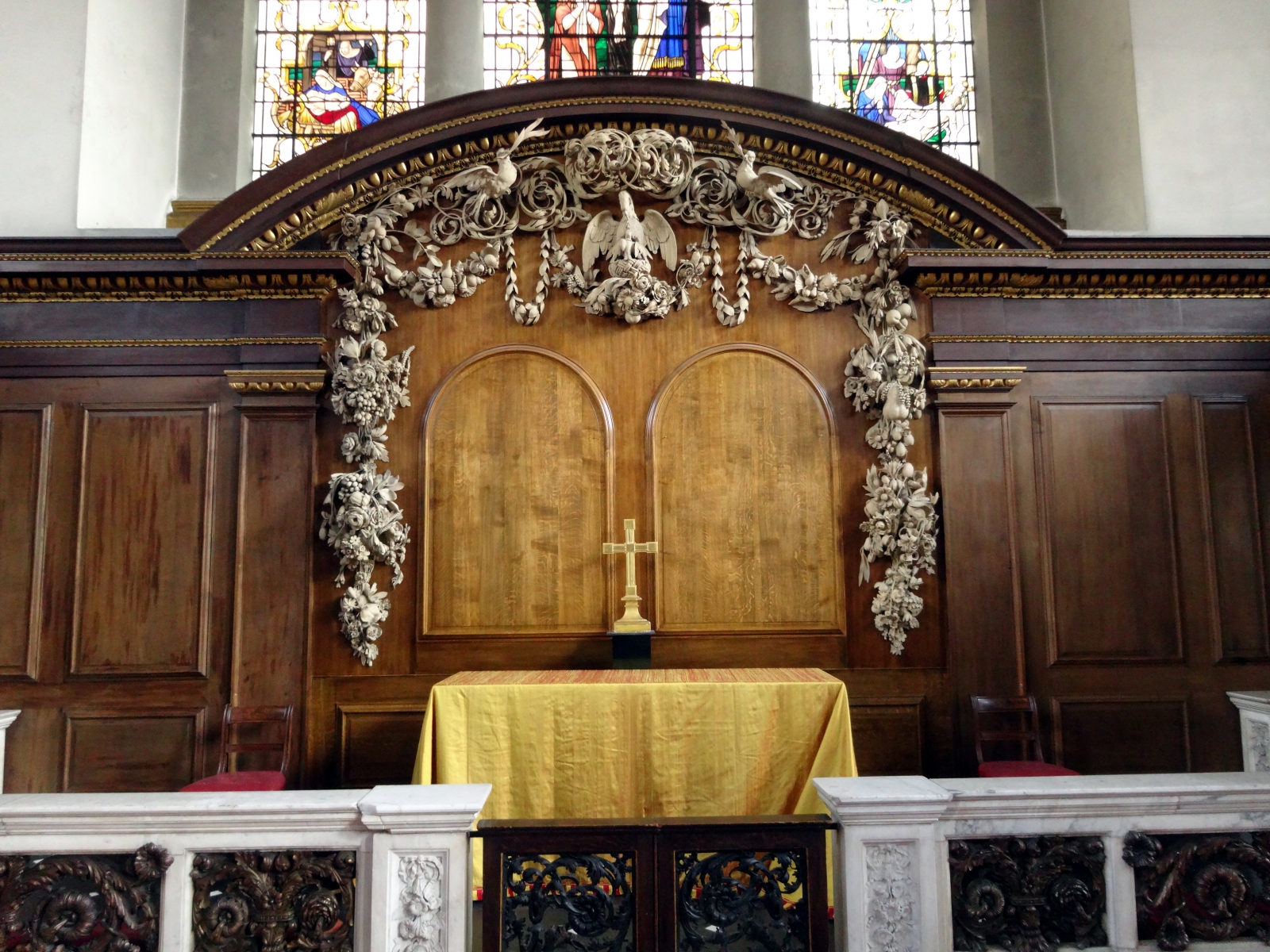
Reredos (1684)
Breathtaking!
“There was no altar anywhere in England, nor has there been any abroad, more handsomely adorn’d.”
Of all of the carvings we saw on this tour, these are my favorites, precisely because they deliver the real impact that Gibbons intended. St, James Piccadilly is one of the very few places where we can see Gibbons’ work as he intended: light colored limewood carvings mounted on darker oak panels. Breathtaking, spectacular and awestruck are words that come to mind, but are words too shallow to describe the beauty of this work.
Diarists of the late 1600s inform us that Gibbons’ work was pale and bright when it left his shop, and was mounted immediately without wax, varnish, or other finish. Some years later, most of Gibbons’ pieces had grown darker from dust, dirt, tobacco and coal smoke. Times change. Decorating fashions change. Some carvings were intentionally stained or waxed to match the rest of the paneling in a room. The result was that through most of the 18th century, Gibbons’ work was dark and blended in with other woodwork in a room. Sometime near the end of the 18th century many were “lime-washed,” giving nineteenth century viewers something approaching the brightness Gibbons created.
Then came the curators of the twentieth century and a return to varnishes and stains. As late as 1998 these very same carvings at St. James are shown with dark stain. See plate 74, (p 100-101) in Esterly’s 1998 book “Grinling Gibbons and the Art of Carving.”
Esterly, in his book “The Lost Carving,” takes us on a very detailed research journey about the changing colors of Gibbons’ work, ending with:
“But there was that flood of Victorian varnish that still stains our sensibilities about the color of woodwork.”
David Esterly
“As for his carving, often darkened, broken and partly the work of others: to see it as it was meant to be seen now requires an act of the imagination.”
We no longer need imagination. Fortunately for us, another Gibbons’ expert and conservator, David Luard, restored the reredos carvings by cleaning them, and then applying a microcrystalline wax and a thin coat of white gouache. Now we see them as Gibbons intended, and how they might have looked when the church was consecrated in 1684.
As for the actual carvings, we see the familiar format of a three-part “surround”; an arching cresting piece and two vertical drops. The cresting here shows a high degree of symmetry, with groups of flowers, foliage, vegetables, and sea shells mirroring each other. The vertical drops are symmetrical as far as their masses are concerned, but each mass contains its own unique grouping of objects.
The pelican in the center feeding her young from a pierced breast is an analogy to Christ, whose image was forbidden in churches of the late 17th century. The doves with feathers are symbols of peace.
Here, as in many other places, I am struck with how high these “high relief” carvings are. That is, the masses are very thick, or deep, if you prefer. Some of the flower masses in the vertical drops are 12 or more inches thick and made of many layers. Building up layers, instead of cutting everything from a solid block, creates the open airiness that gives the carvings life. The doves at the top stand out to about 15-18 inches from the back panel. I’ve taken a number of pictures from the sides to show these depths.
The detail is hard to comprehend. One can look at it, get close enough to touch it, inspect it from all directions and still not understand how it was created. I was awestruck seeing it and still haven’t explored the photos as much as I want.
Today we do not know how much of this reredos is Gibbons’ original work. We find in the church’s history: “In 1846 the limewood carvings had also become very dilapidated and they were restored by George Lock and G. Kent of Leamington, using 850 new pieces.” Even with “…850 new pieces… ,” art historians still fully attribute the work to Gibbons; no asterisks or footnotes in those attributions.
For woodcarvers, especially fans of acanthus leaves, this week’s carving challenge is to recreate one of acanthus rinceaus from the very top of the cresting. “Rinceau” is the French word for a swirl-like carving of sinuous leaves. (This is the only chance I will ever have to use the word “rinceau” in real life.)
A little closer
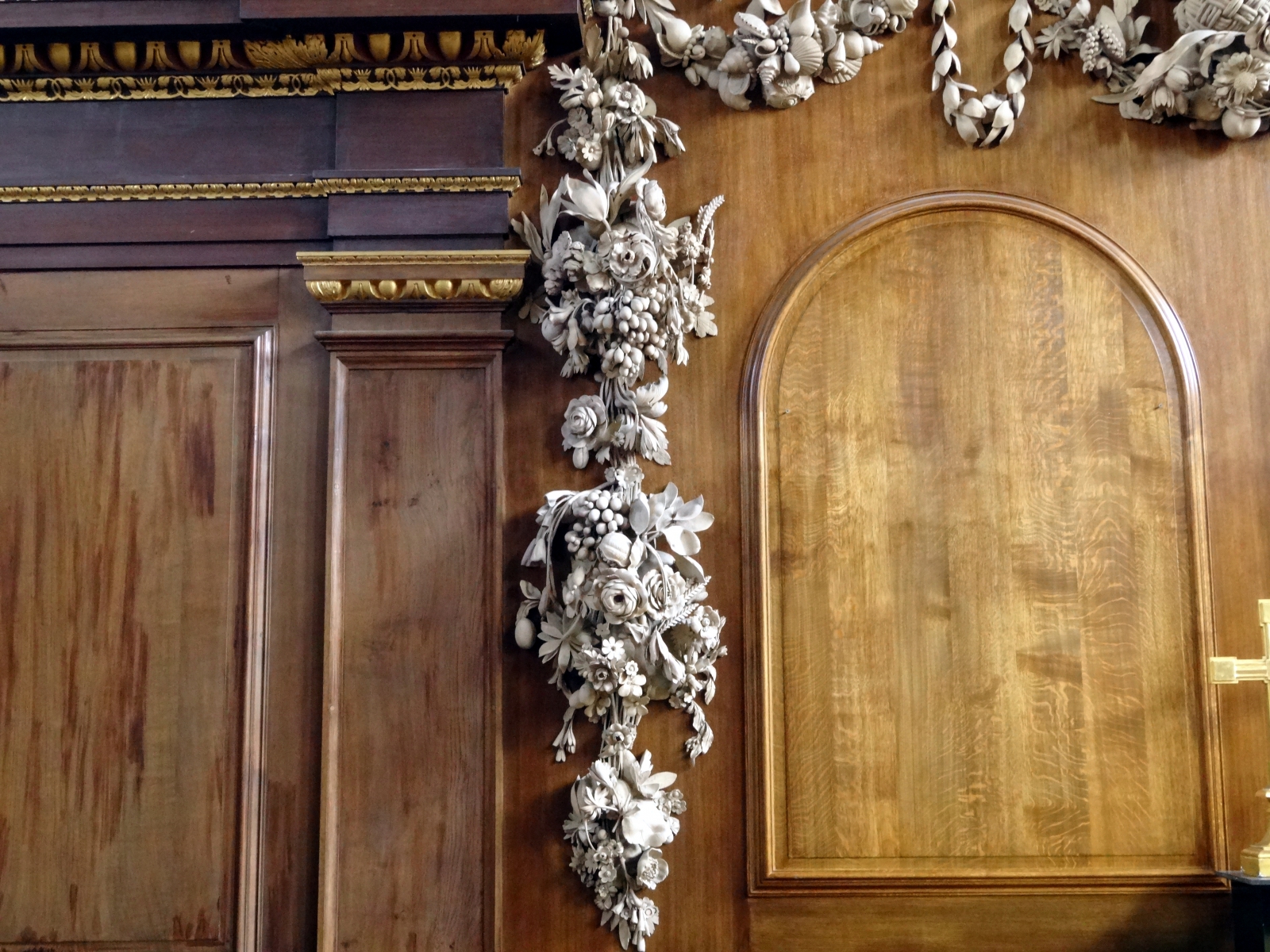
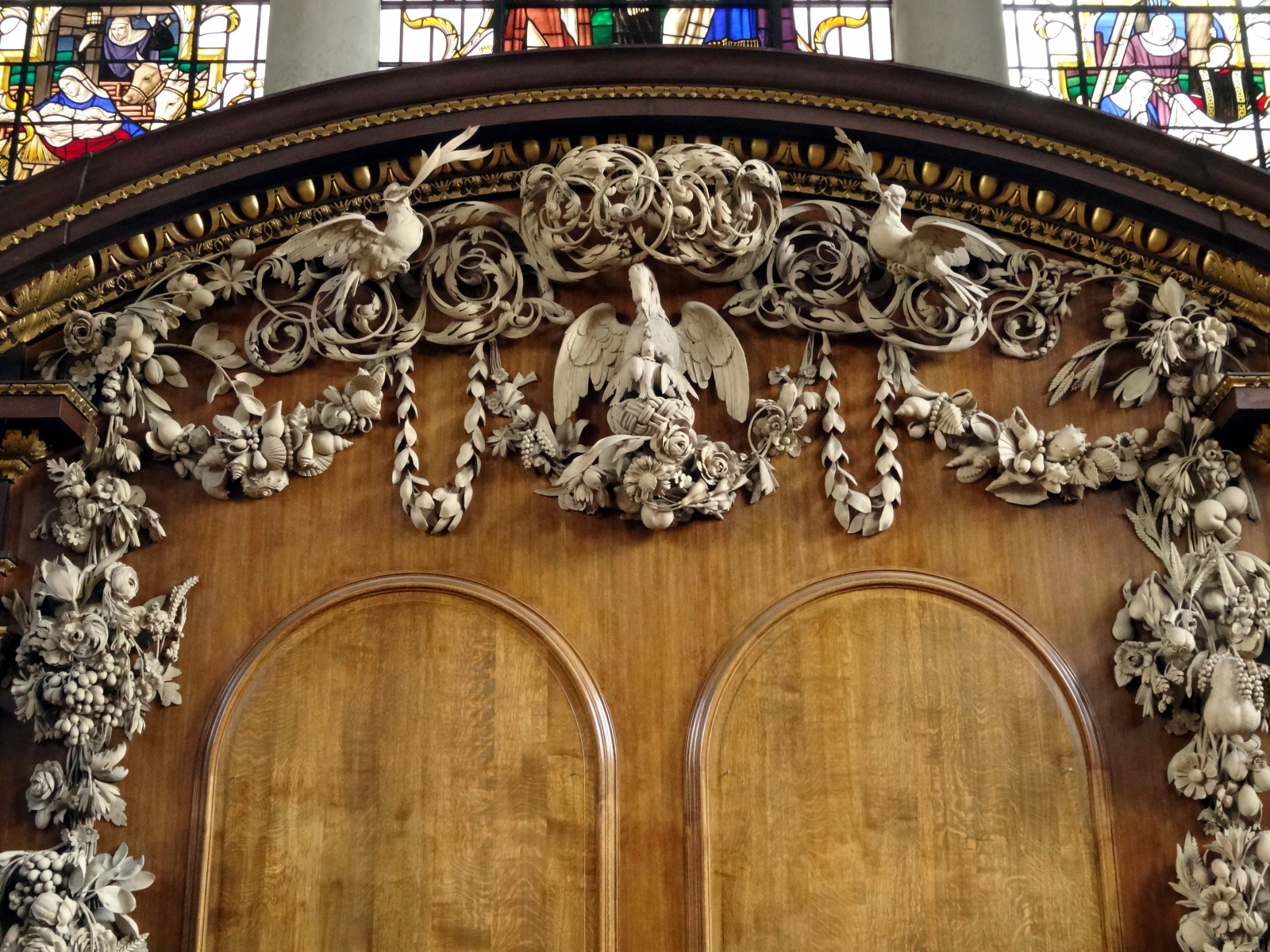
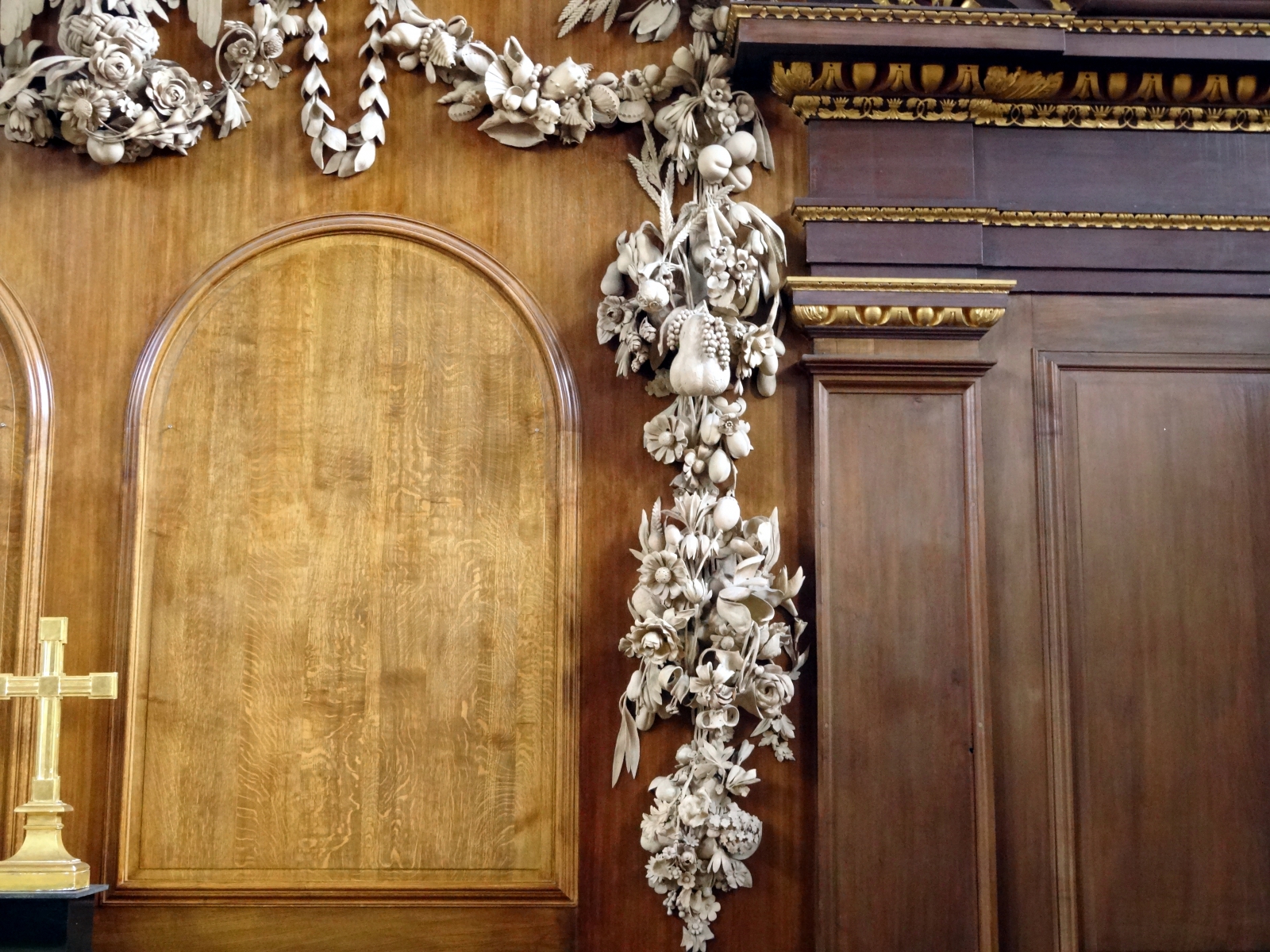
Zoom in on the cresting
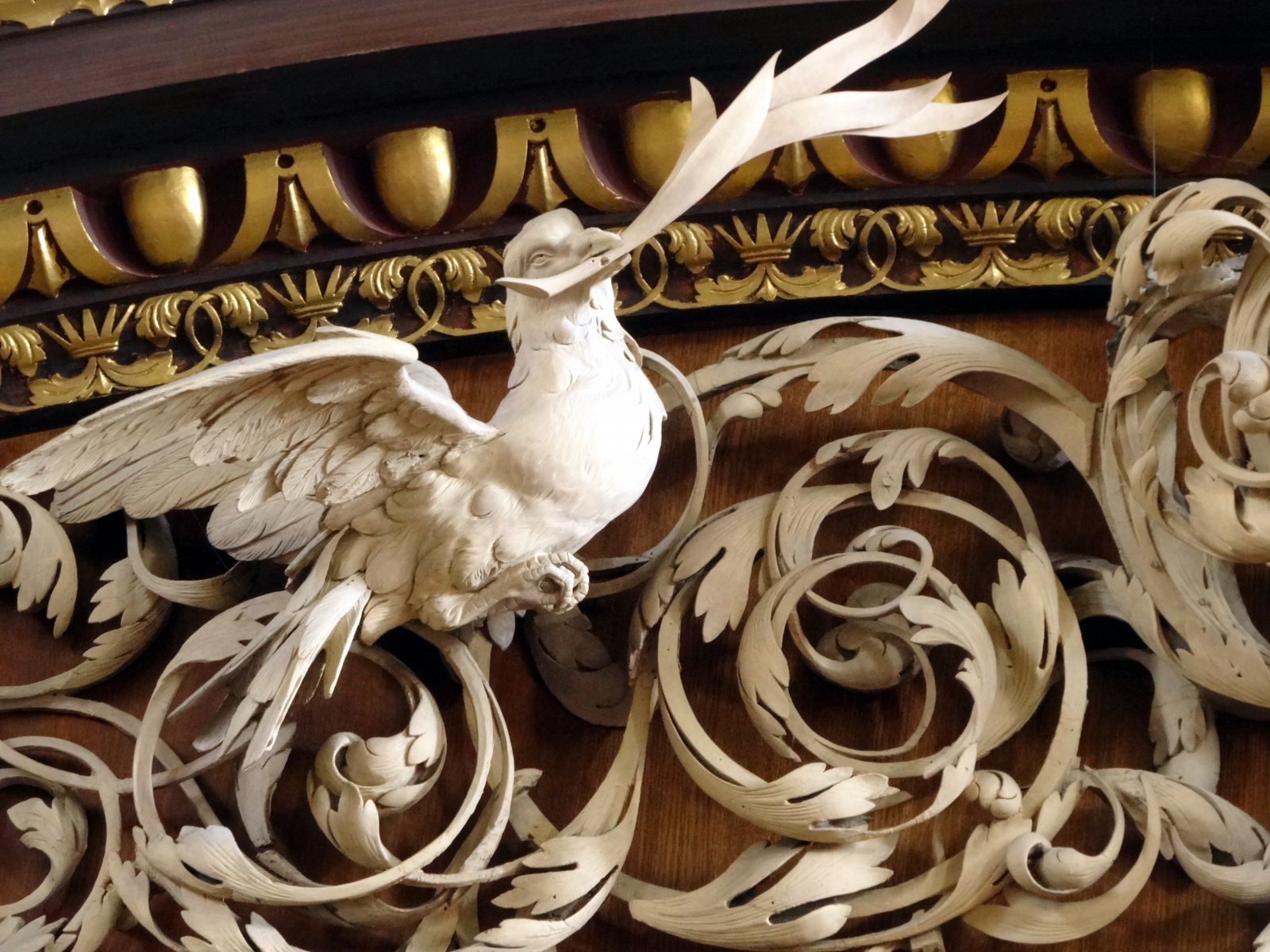
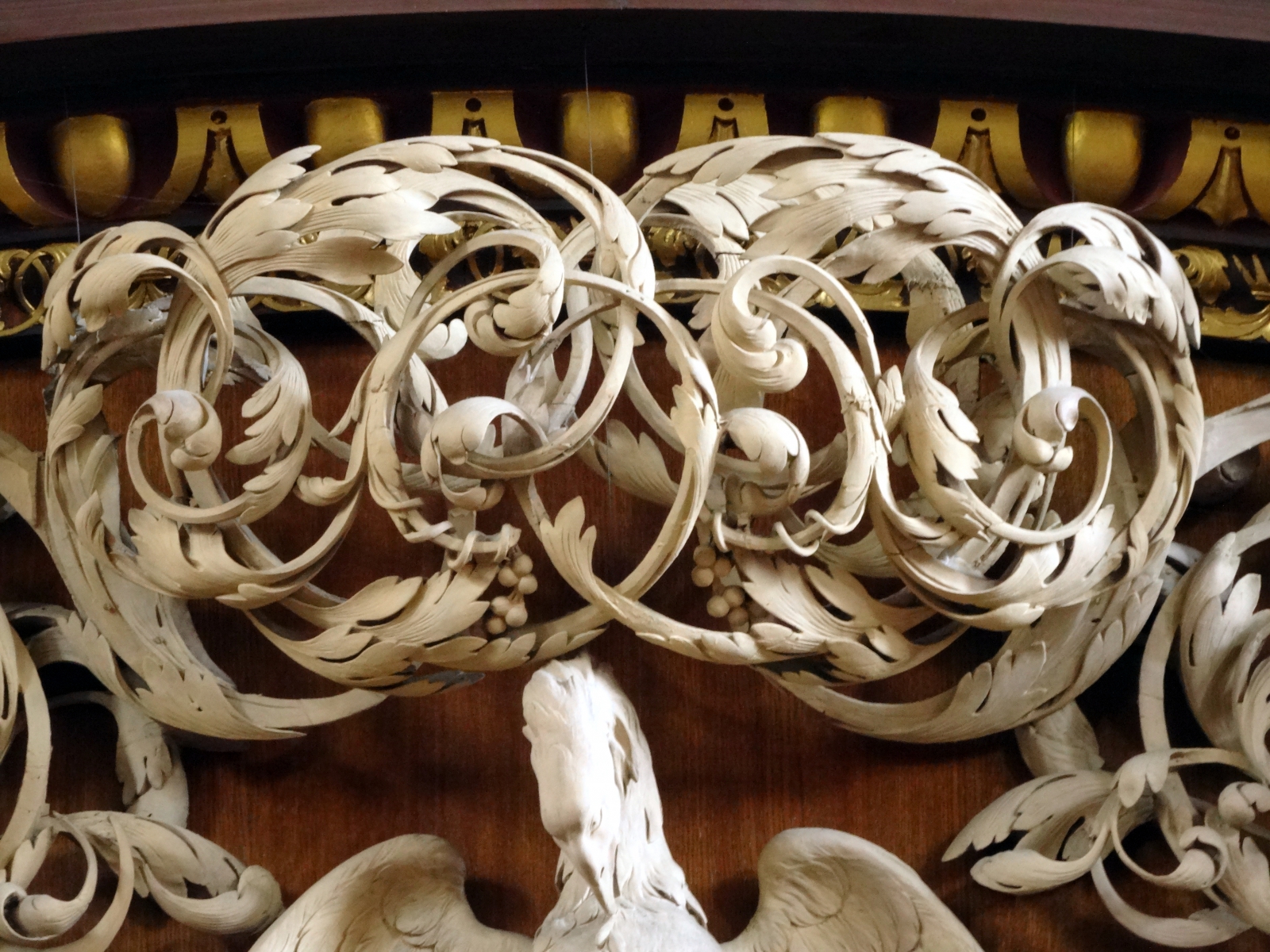
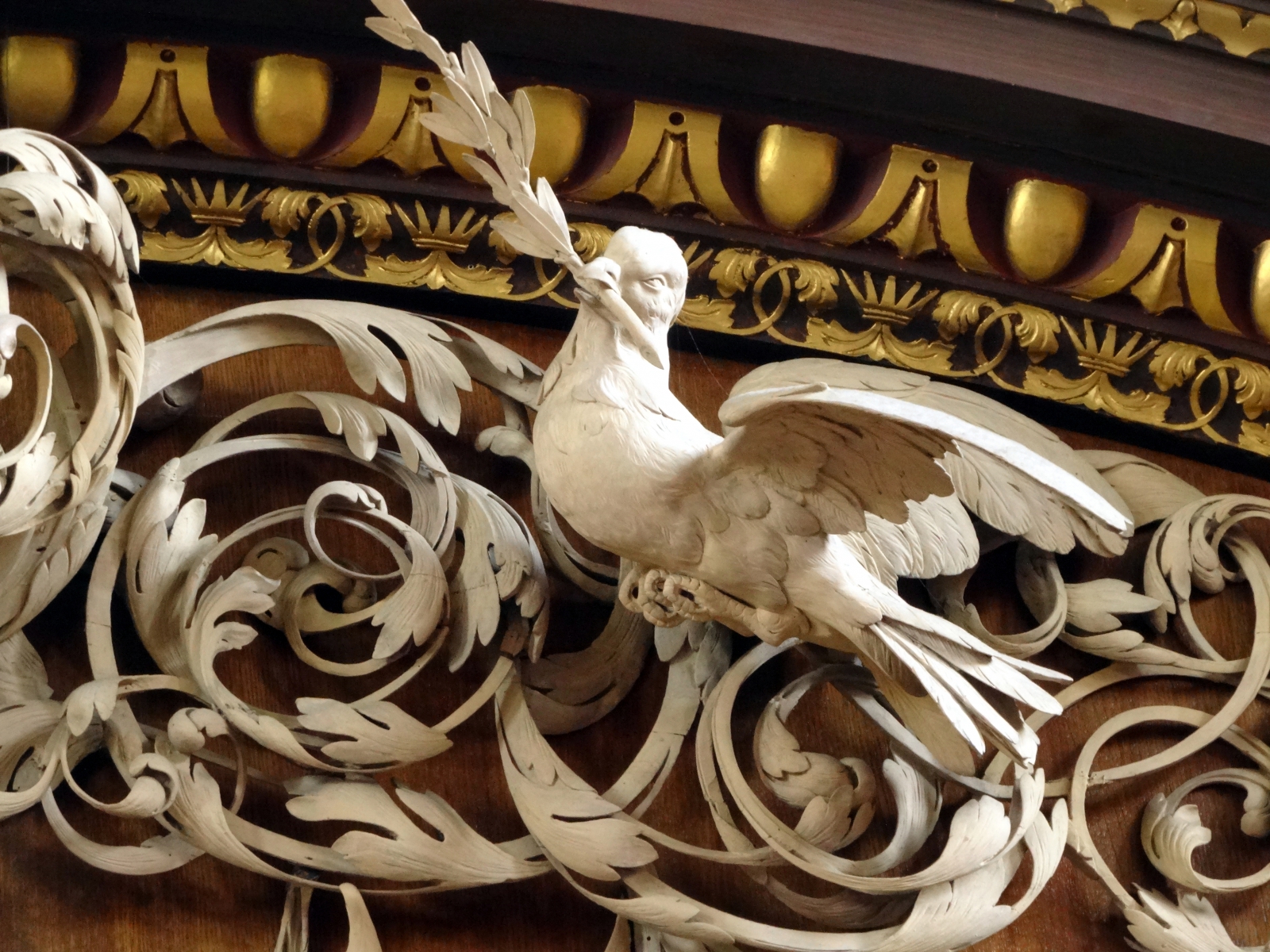
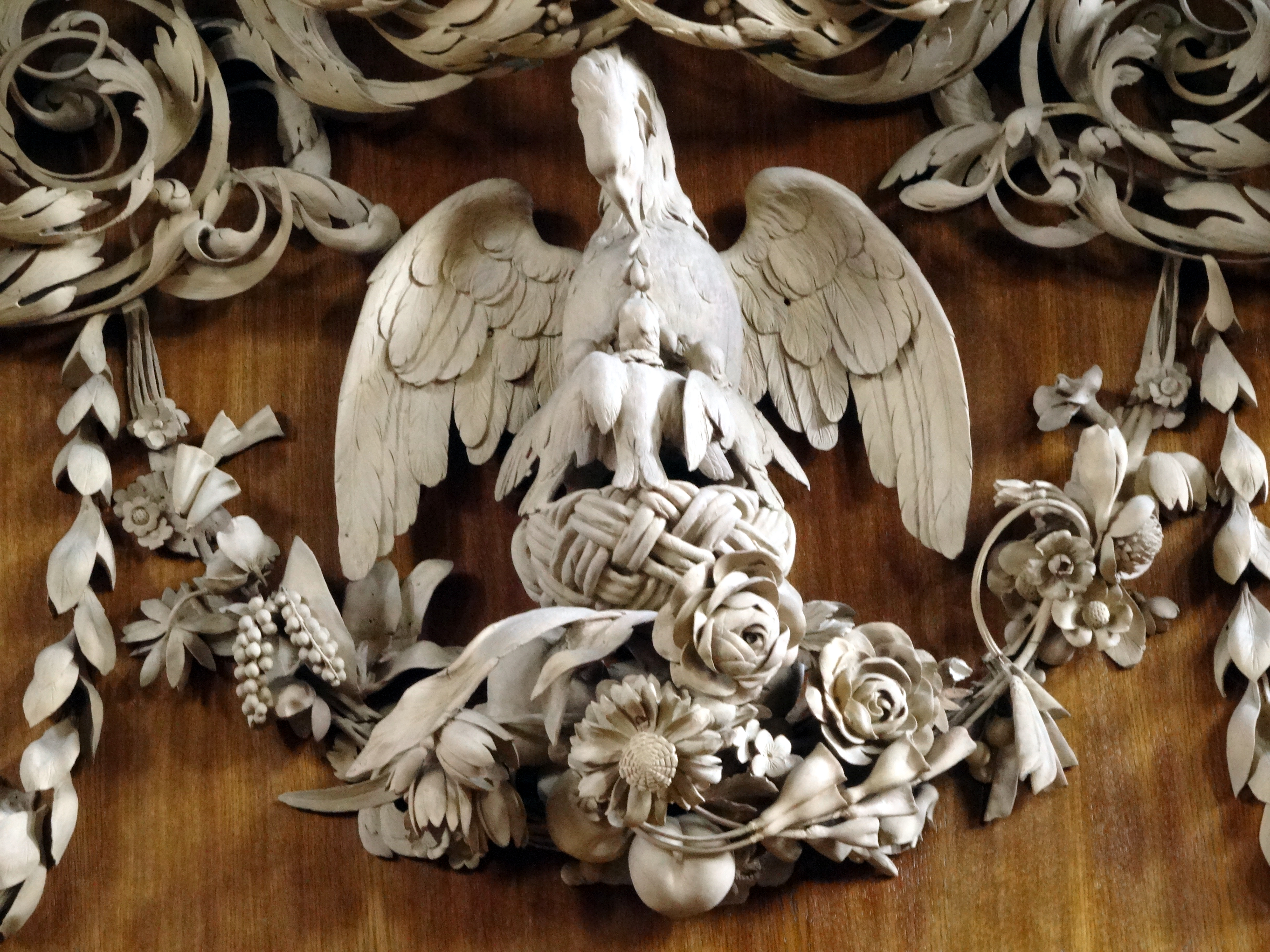
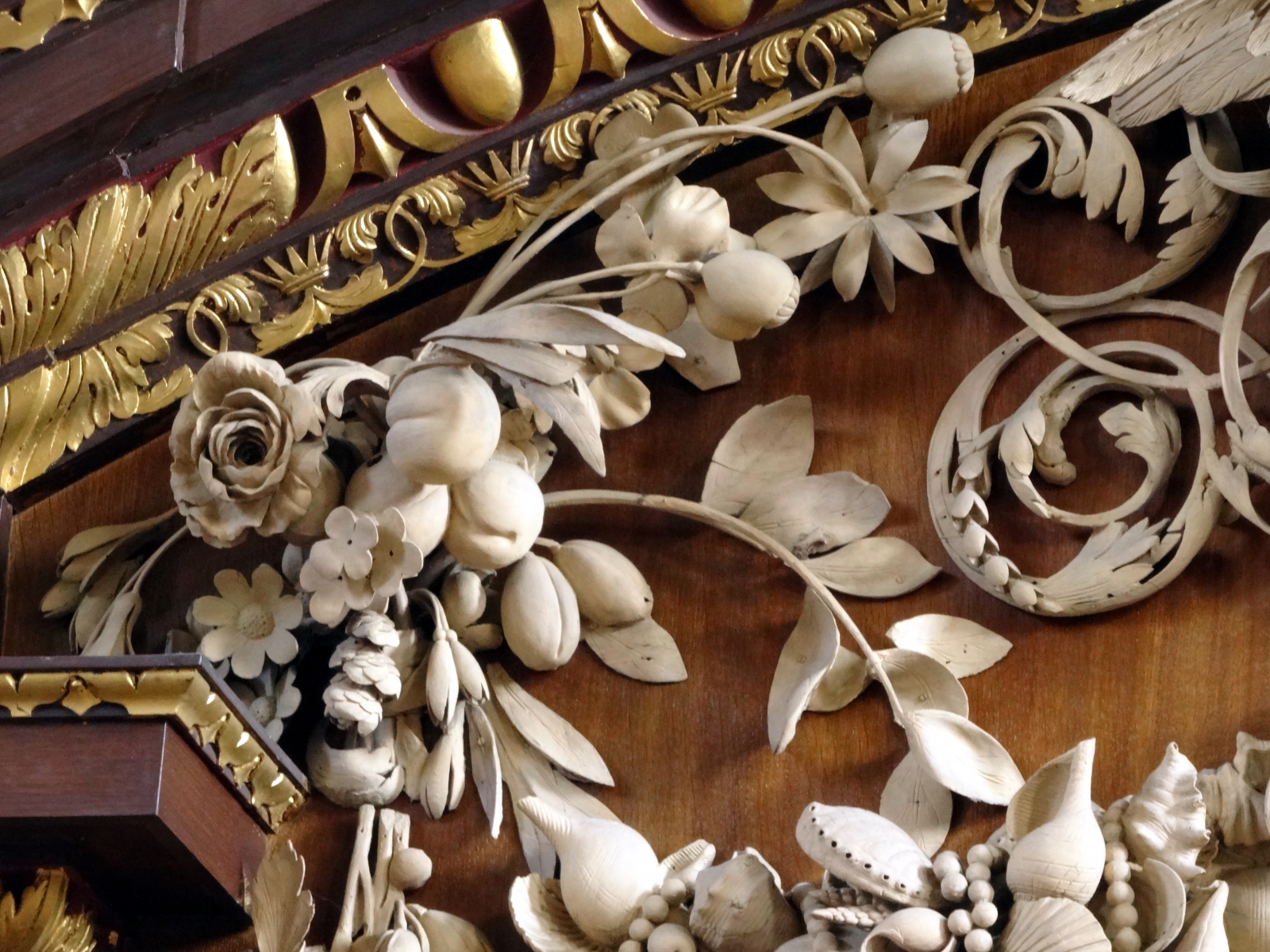
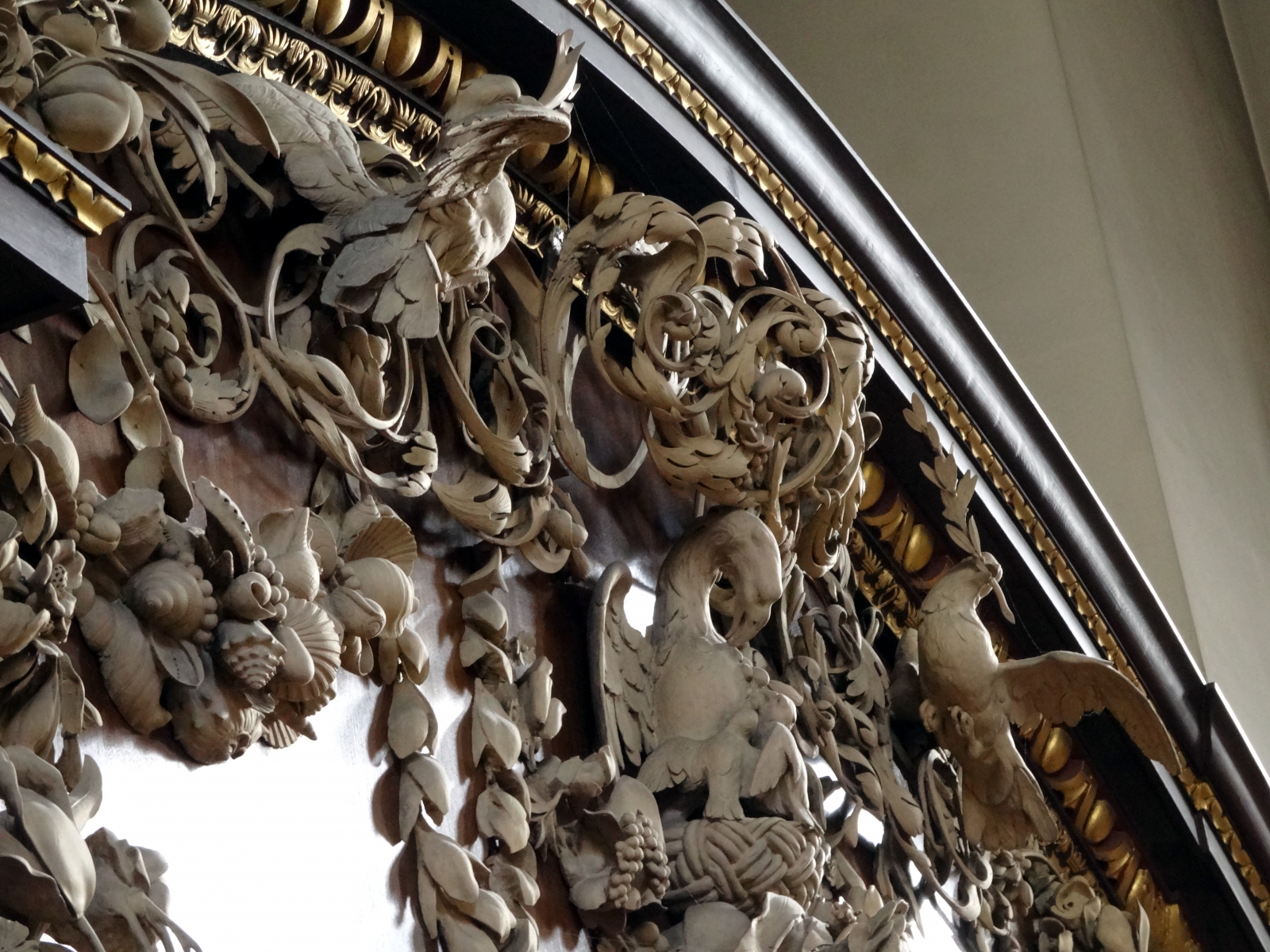
The vertical drops
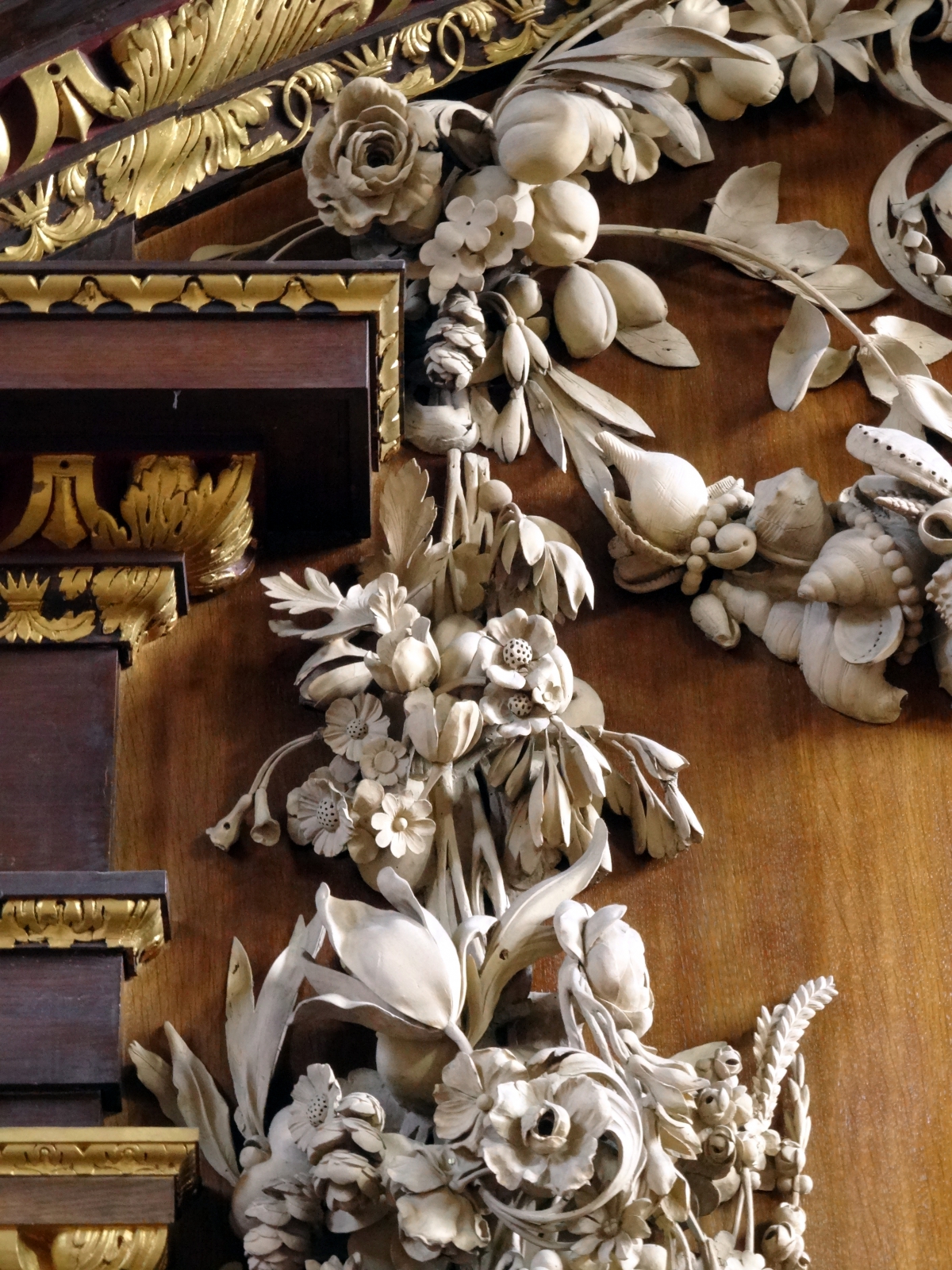
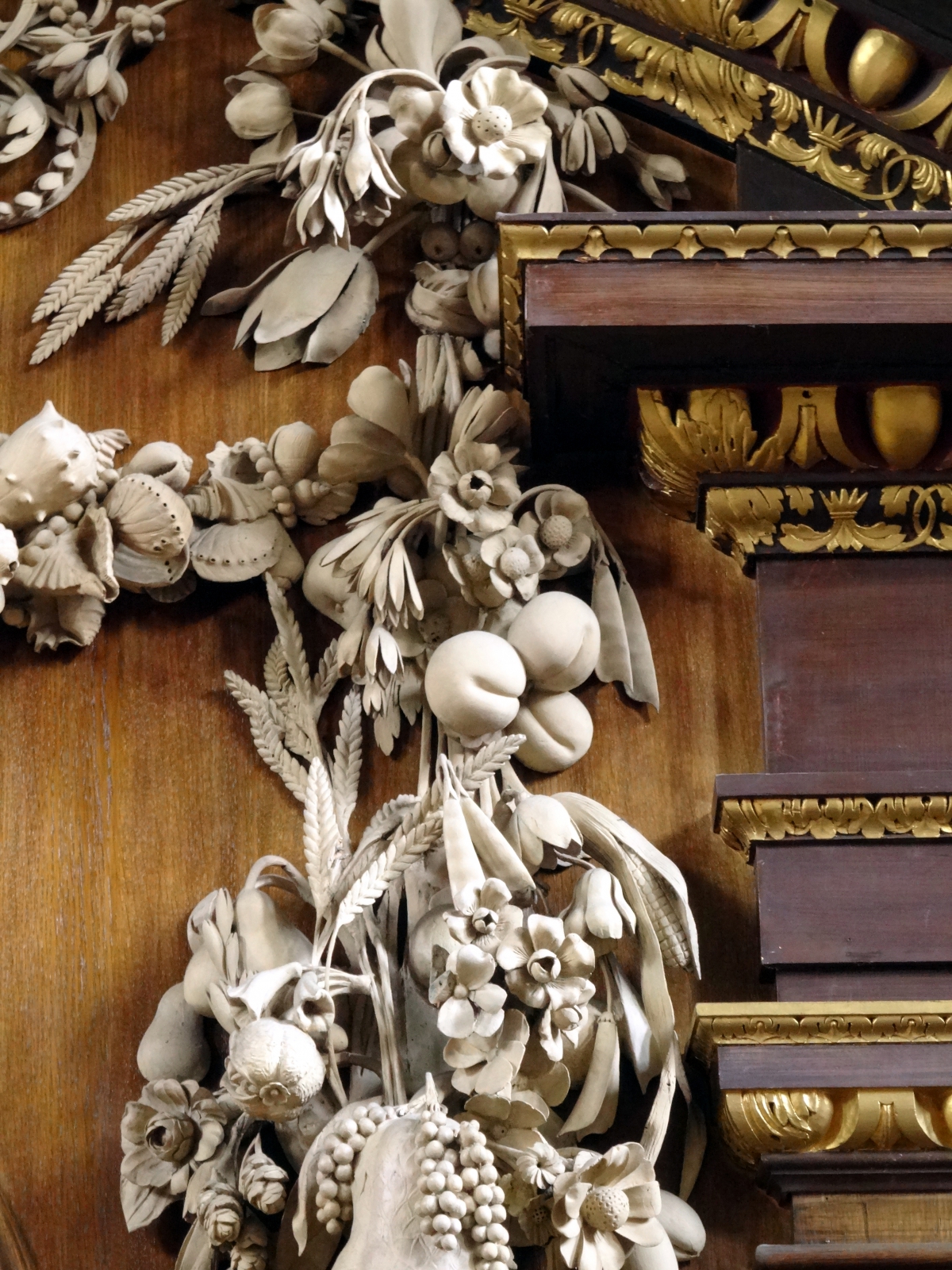

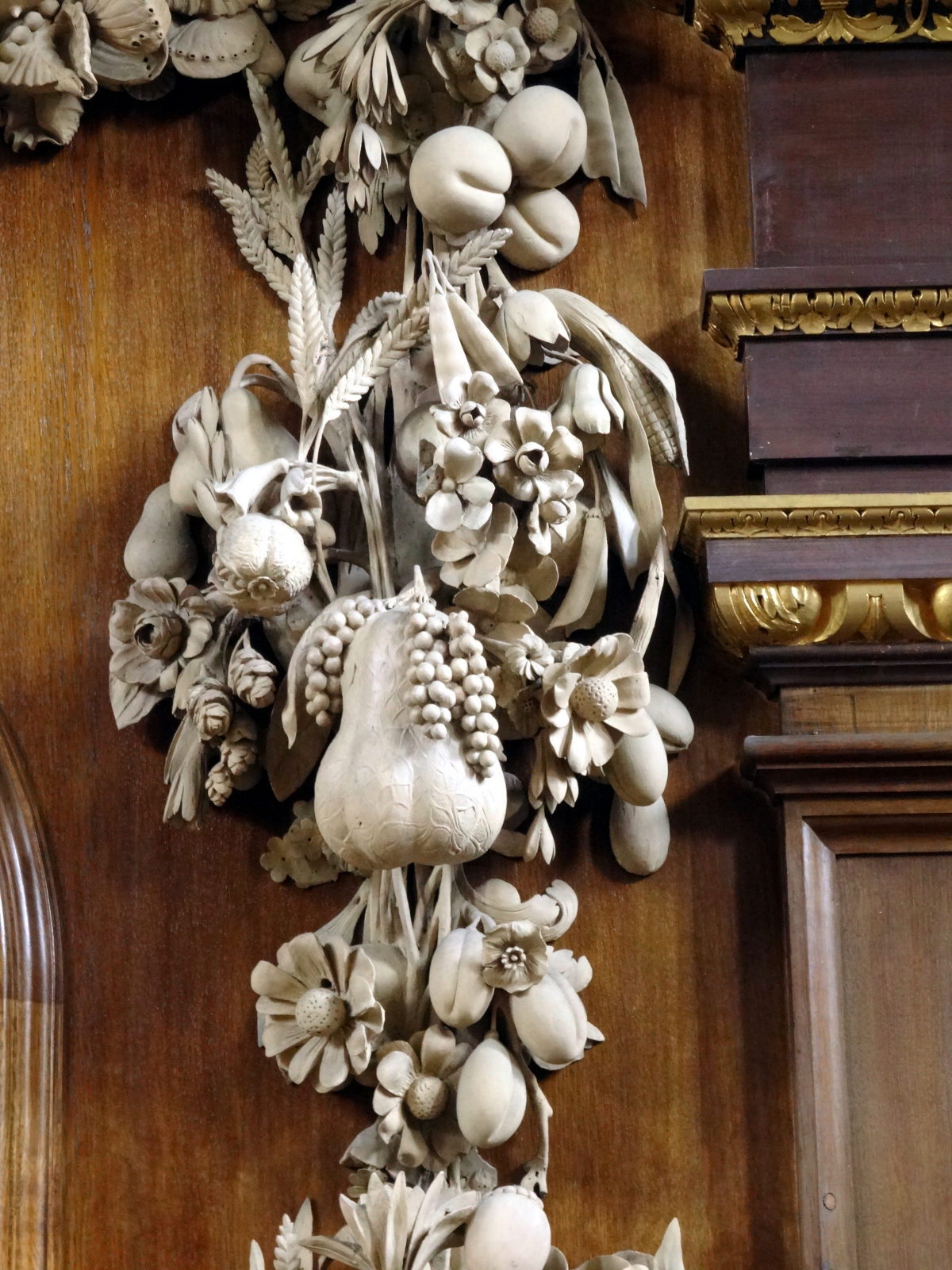
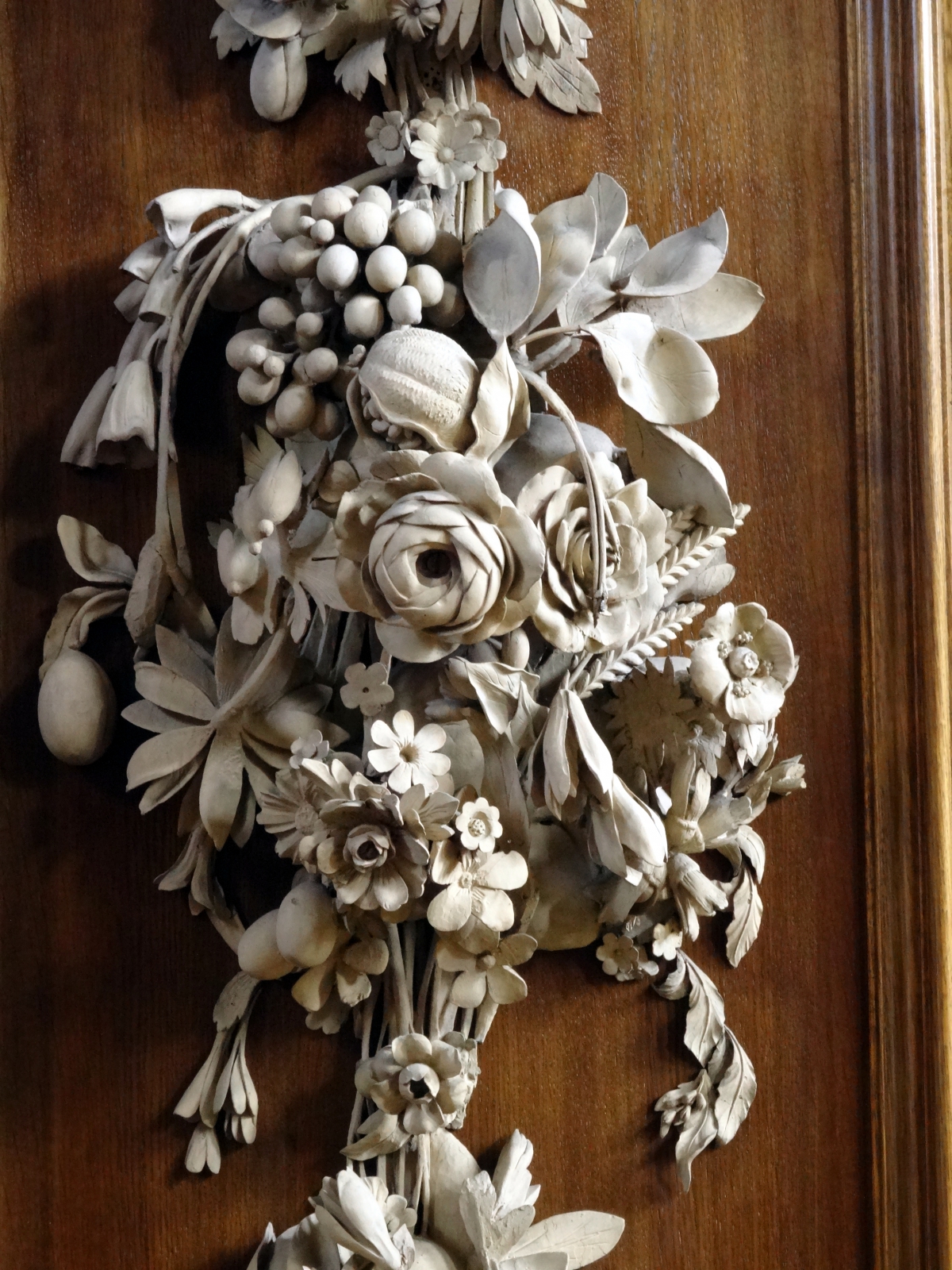
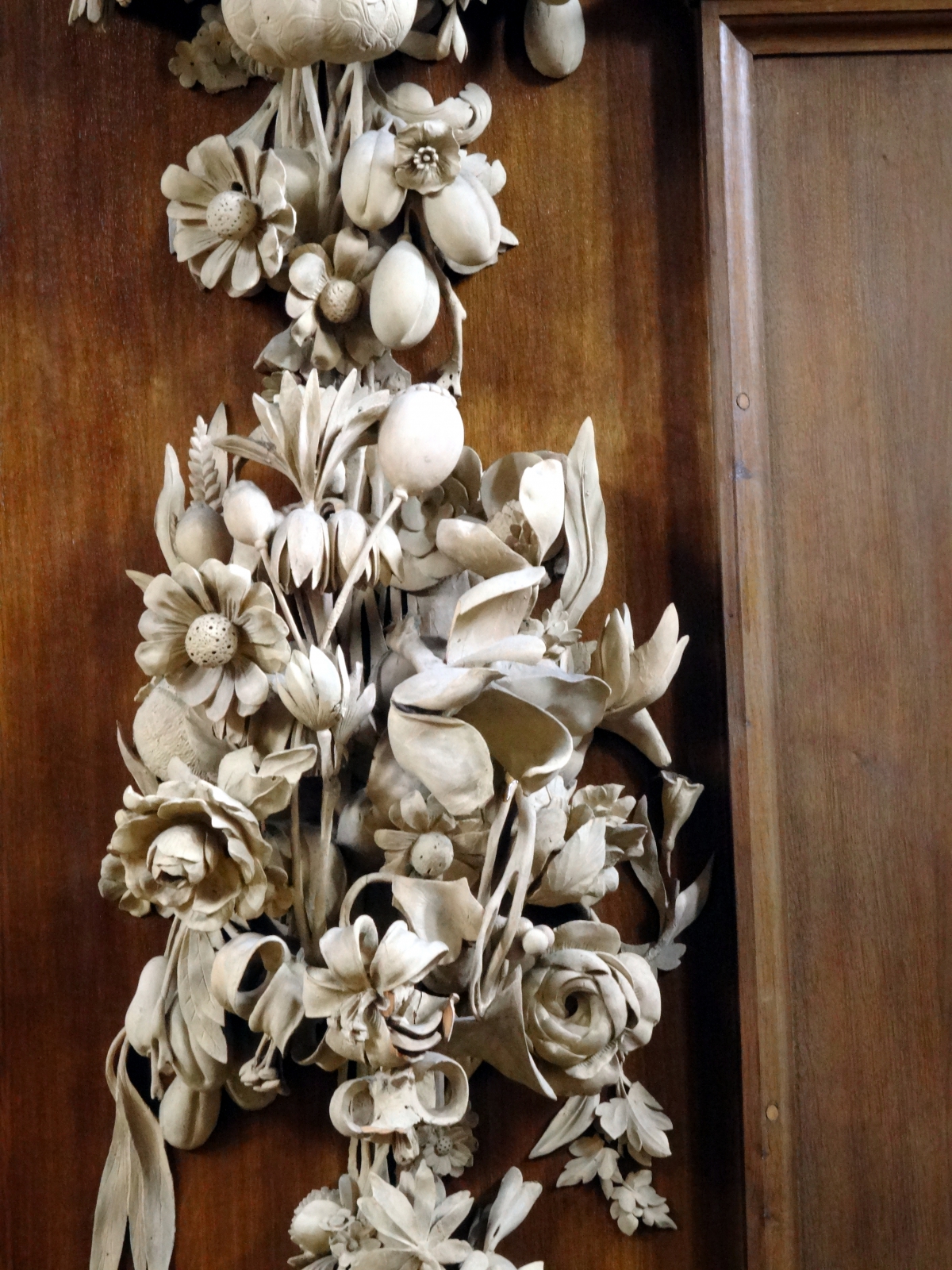
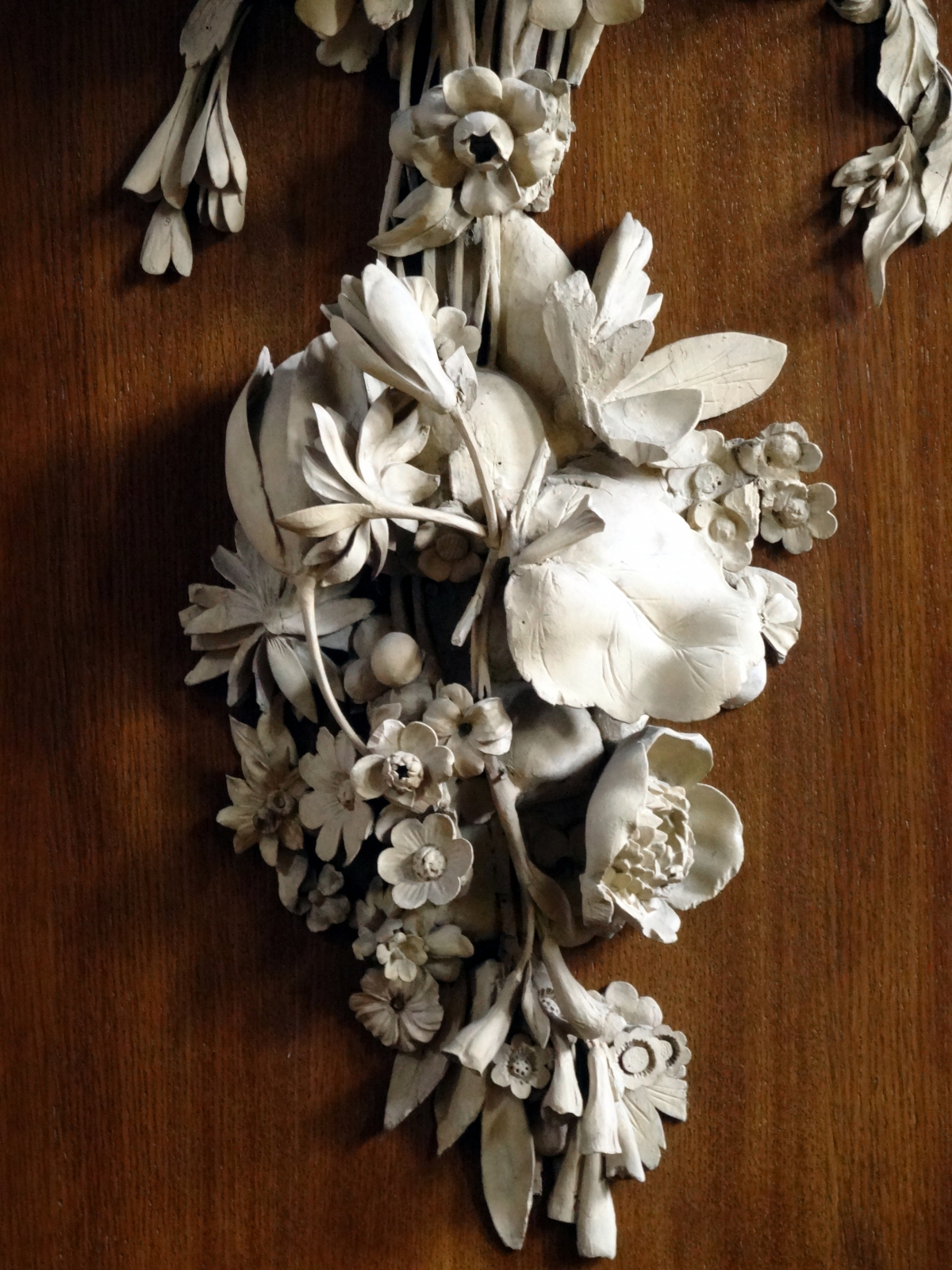
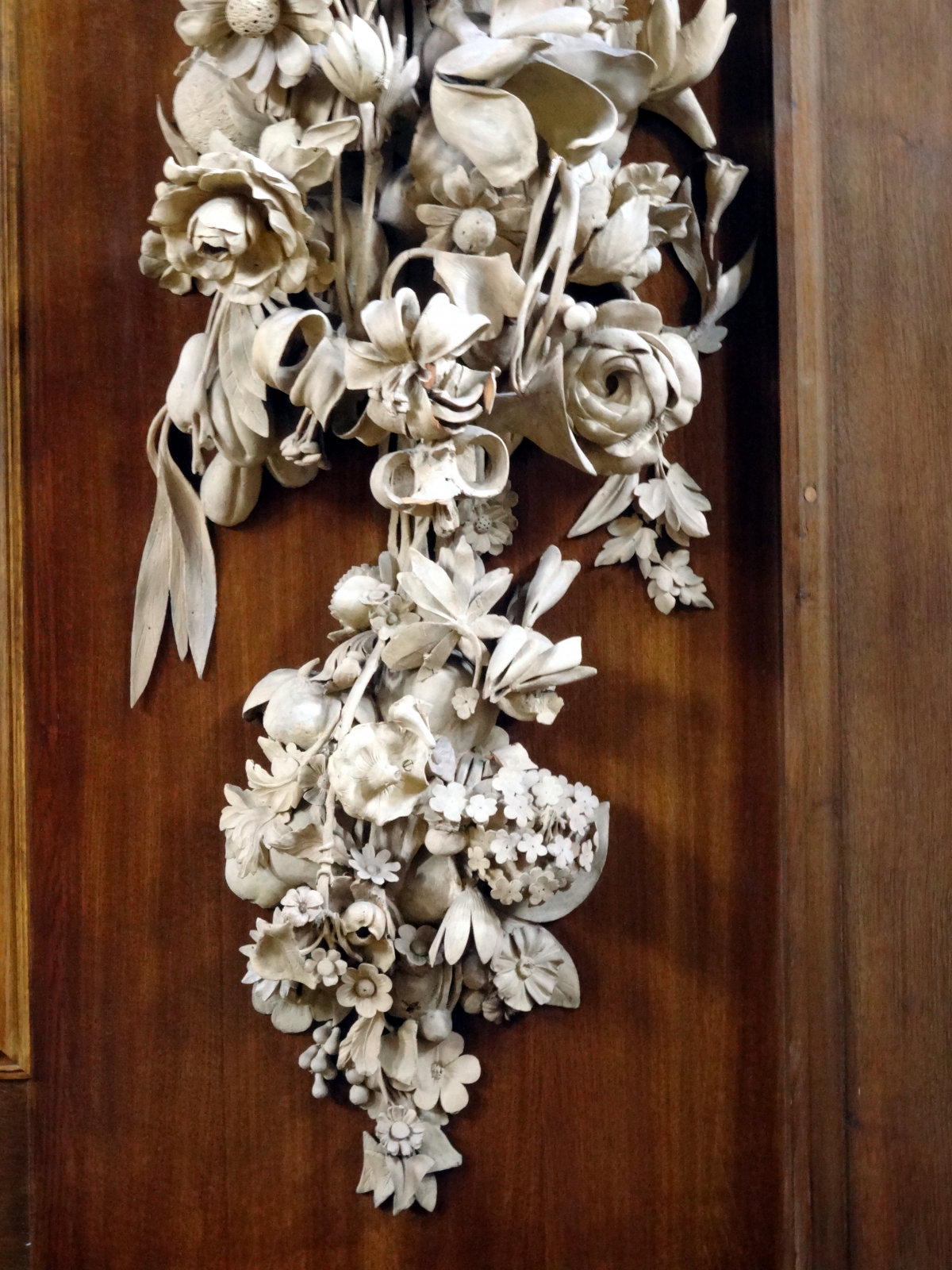
Side views, left then right
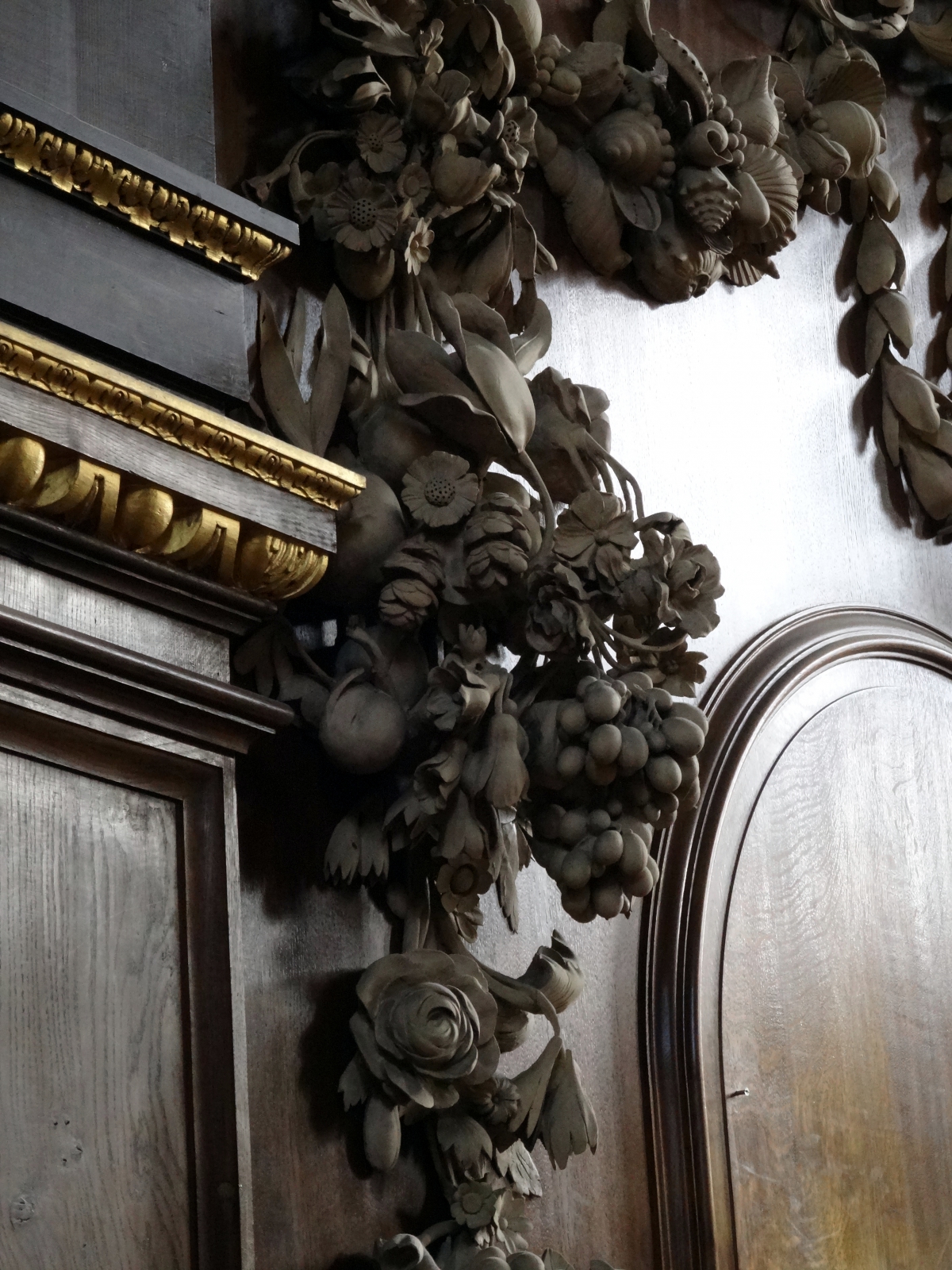
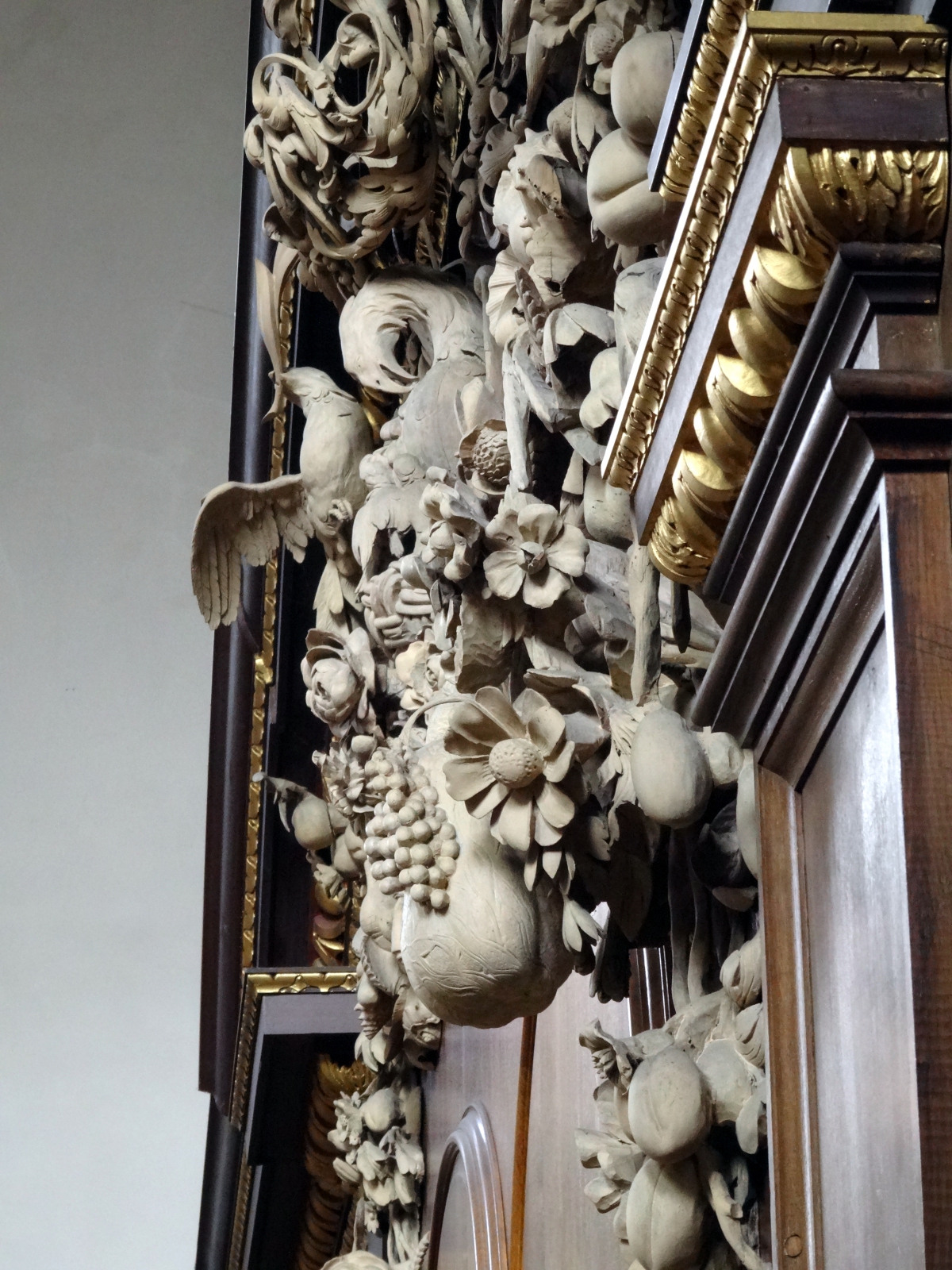
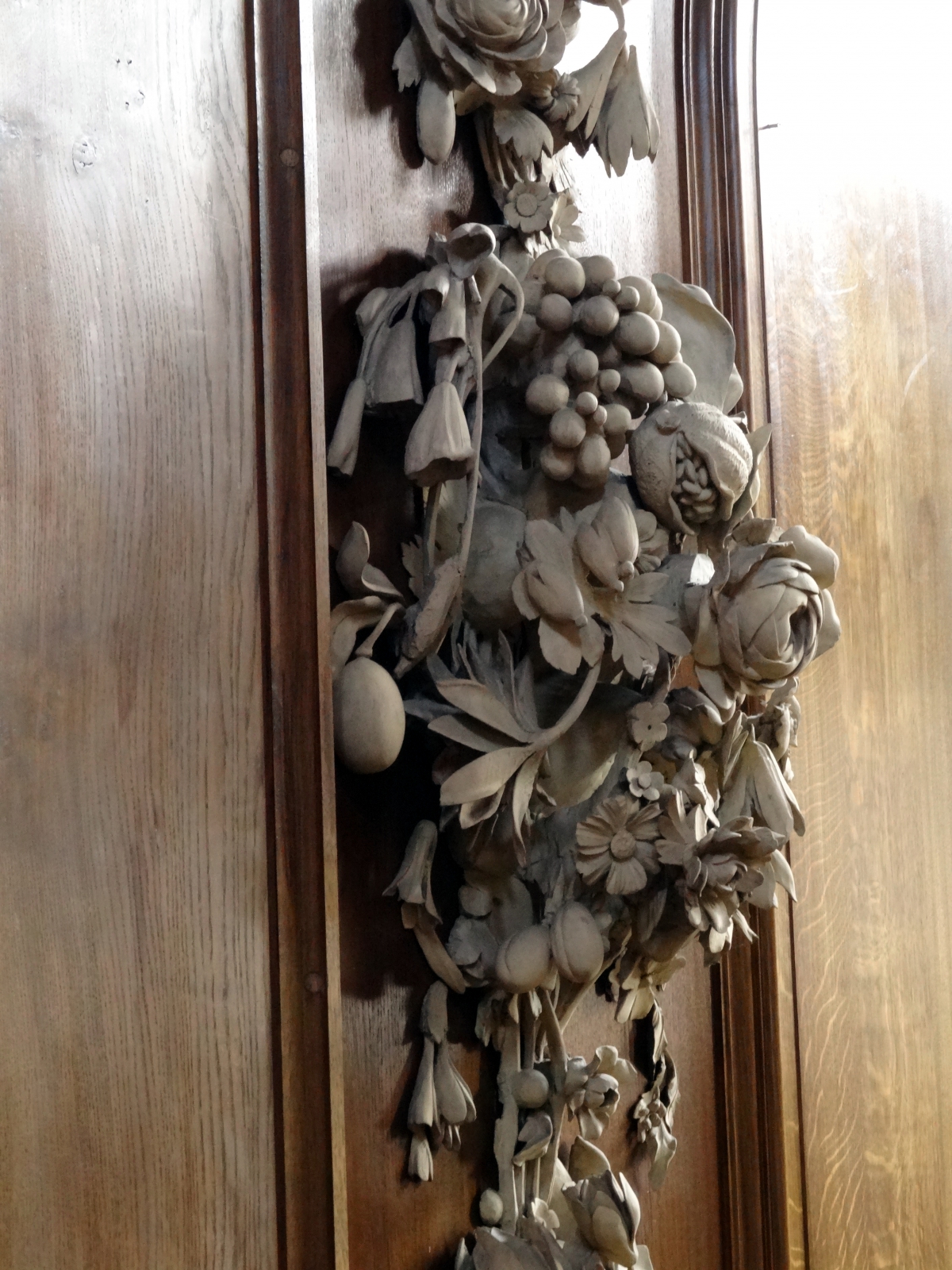
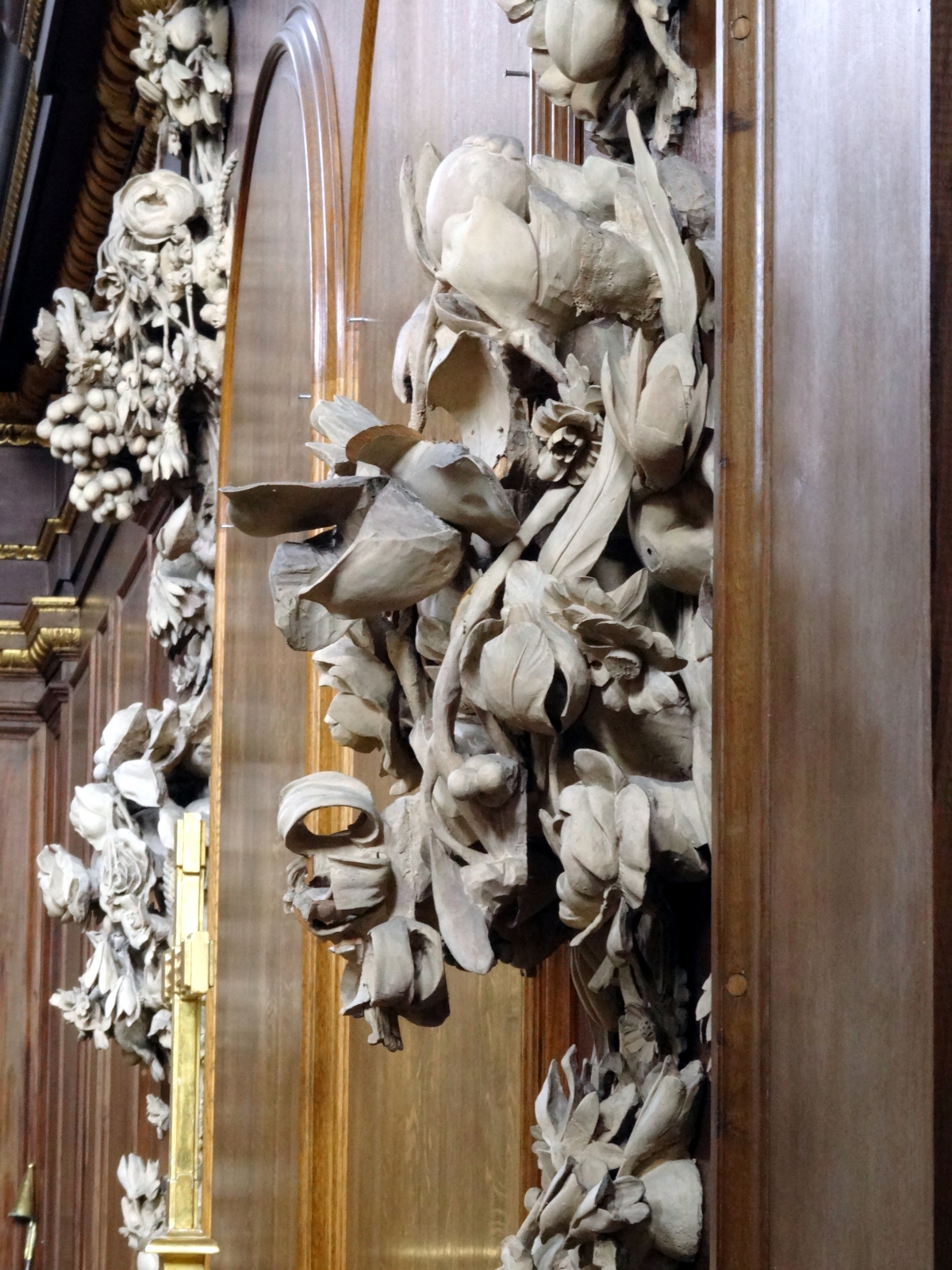
Font (1686)
A white marble baptismal font, attributed to Gibbons, was an anonymous gift to the church. The basin stands on a stem that is carved to represent the tree of life. A serpent wraps around the tree trunk; Adam and Eve stand to either side. Three low relief scenes surround the outside of the basin. They represent the Baptism of Christ, the Baptism of the Eunuch of Candace by St. Philip, and Noah’s Ark.
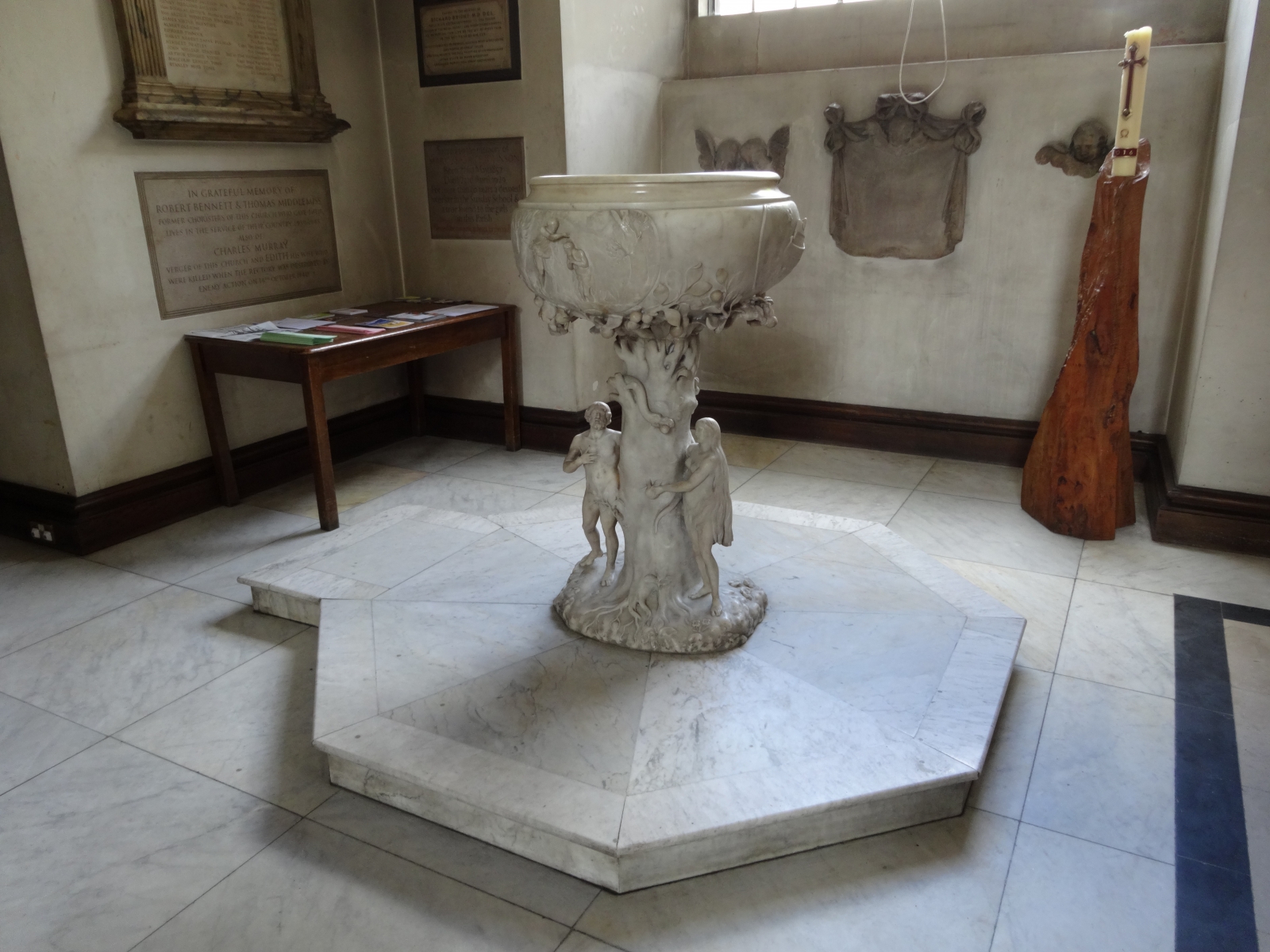
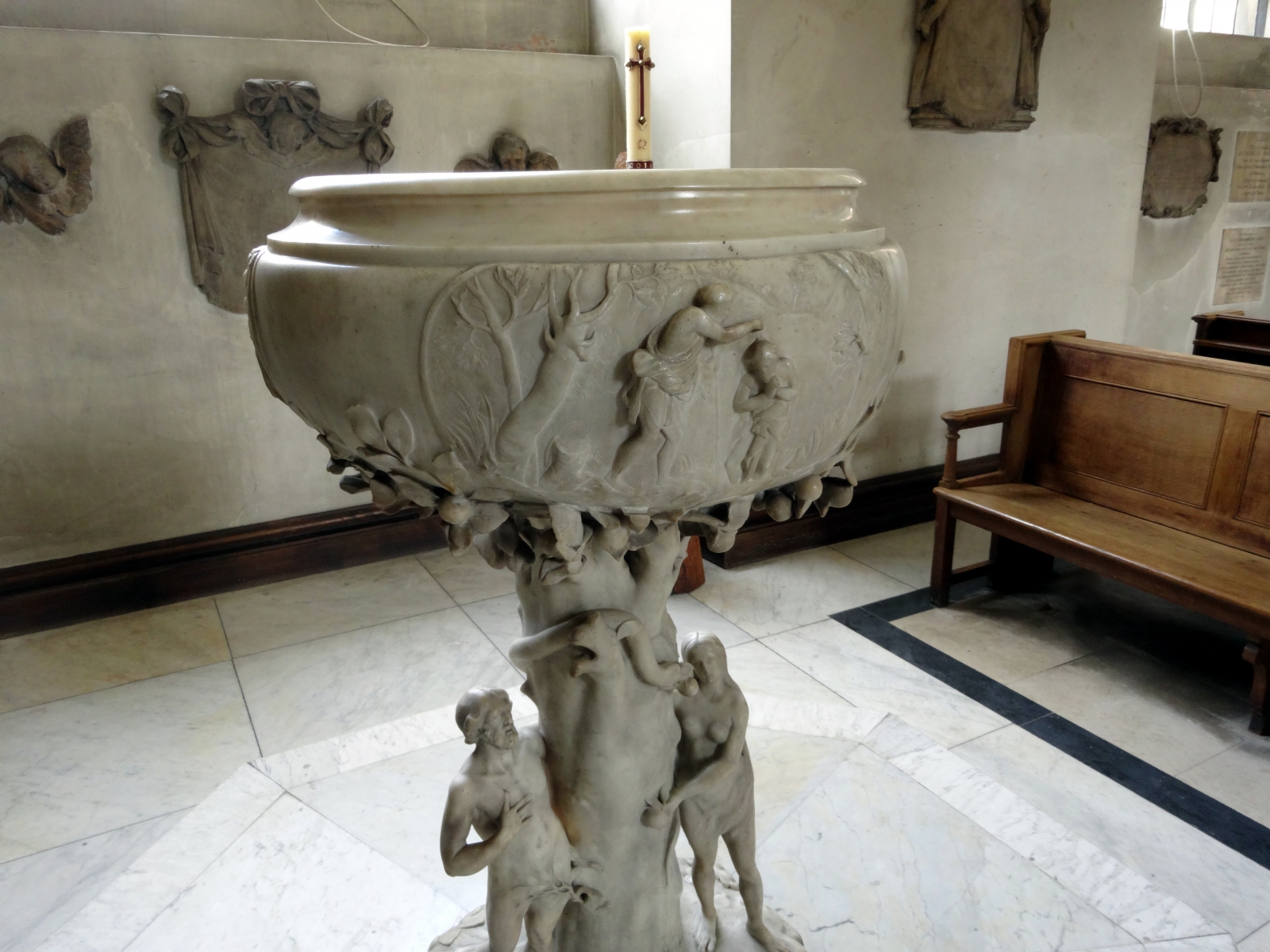
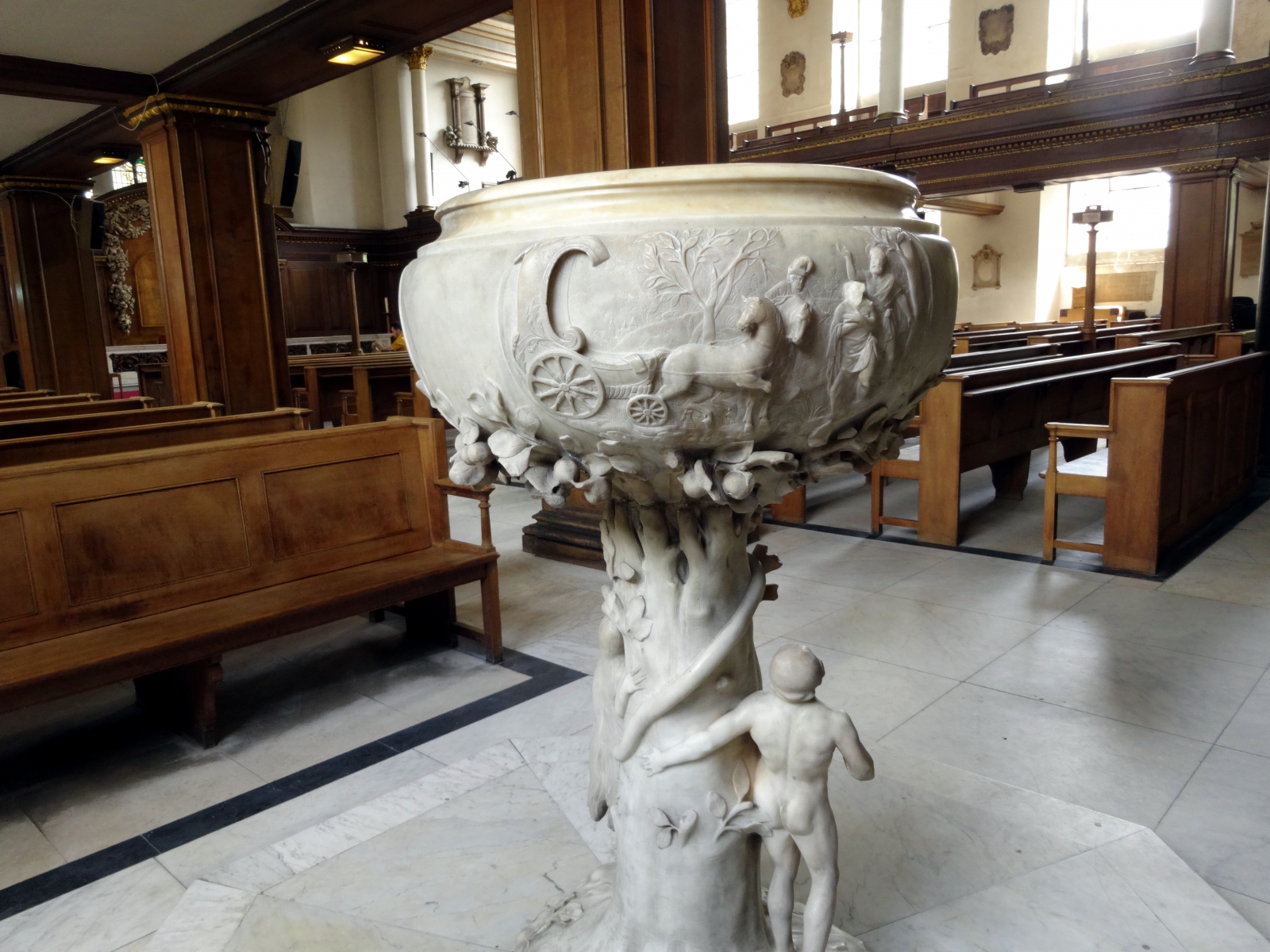
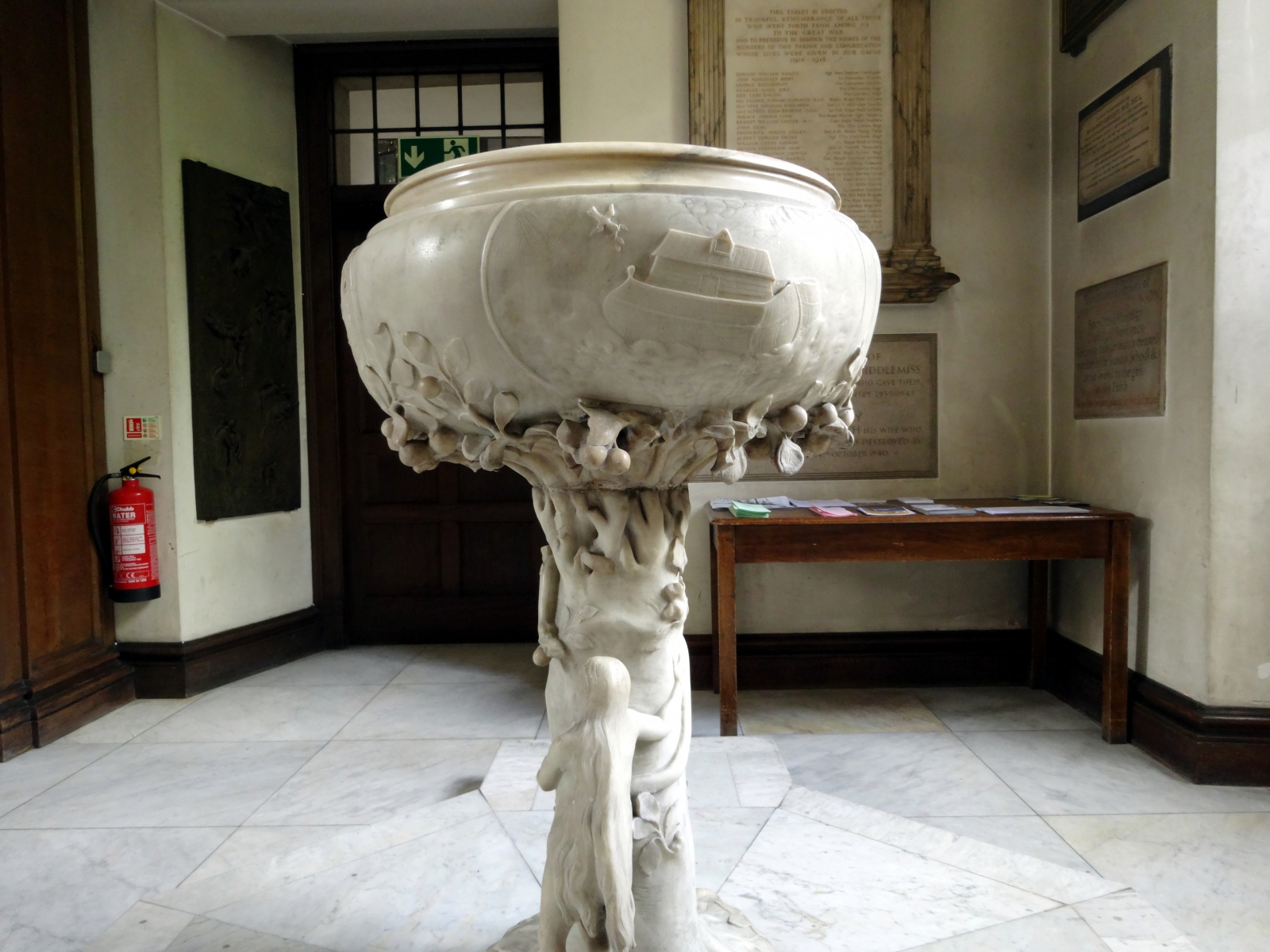
Organ Case (1686)
One source attributes to Gibbons the “front of the organ case,” another “the 6 angels on top.” In either case, the organ is large and impressive … and a very long reach for my camera.
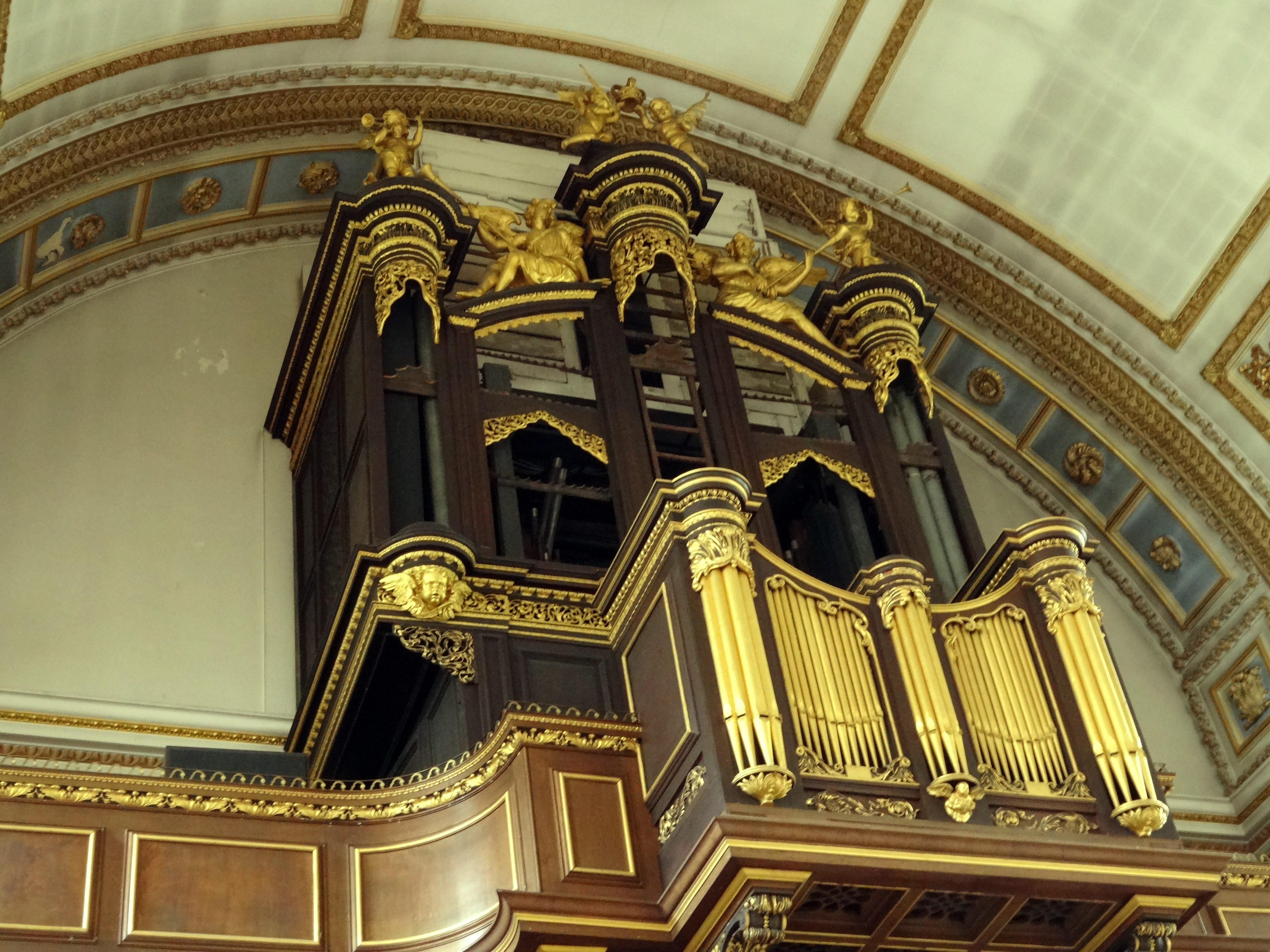
Oh, by the way…
St. James is a Sir Christopher Wren church. We hear of Wren mostly from his architecture for St. Paul’s cathedral, but he also drew the designs for many churches destroyed during the great fire. This is the first time that Gibbons’ work coincided with Wren’s. Gibbons did not work “for” Wren in this case. The reredos was a commission from Robert Gayer, who gave it to the church.
As with other churches, St. James was damaged in WWII bombings (1940) and restored in the 1950s. Today, it is a bright and well-maintained church that is very active in restoring their valuable property and holdings.
See more of the church with this 360° panoramic view.
I visited St. James in November 2019 in late morning. It is amazing! I also saw that there were several homeless people sleeping in the side pews….( you can see them on the 360 degree panoramic view). There were no others in the church besides us. It was very peaceful with complete access to view these wonderful carvings.
Yes, the Gibbons work is amazing.
We too noticed that several churches accommodate sleeping visitors. I wonder what that is like now with all the COVID restrictions.
Excellent article, thank you.
I was thrilled to visit this beautiful church yesterday (22 Sep 23) for a presentation by Trinidadian artist Che Lovelace, whose four panels commemorating the 250th anniversary of the baptism of former slave Quobna Ottobah Cugoano now grace the narthex at the opposite end of the church from these spectacular Grinling Gibbons carvings. It’s interesting that more than three centuries apart, both artists chose to produce dramatic representations of foliage and birds – doves and a pelican in Gibbons’ case and hummingbirds in Lovelace’s. Perhaps a botanist can provide a full list of all the plant species St James’s now contains! Well worth a visit – even without a working pipe organ in that impressive case. In such a wealthy area as Piccadilly, couldn’t funds could be raised to commission a new organ that would be worthy of this wonderful building? Organ music, like great art, makes the spirit soar.
Thanks Stephen for the reminder of how beautiful St. James is, and of the Che Lovelace exhibition now there. For those who want to know more about that artwork, see this article.